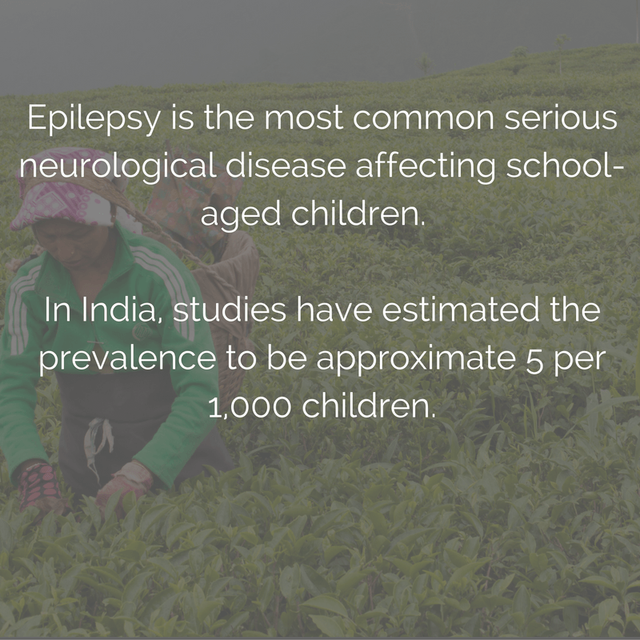12/10/2016 by Michael Matergia 0 Comments
Tackling Childhood Epilepsy in the Darjeeling Hills
Epilepsy is the most common neurological disease affecting school aged children in India. Yet, while highly treatable, due to lack of awareness, stigma, and access to healthcare, "epilepsy is more of a life sentence than a medical diagnosis" for children in rural India.
Epilepsy is the most common serious neurological disease affecting school-aged children. In India, studies have estimated the prevalence to be approximate 5 per 1,000 children. (1)
The burden on children sufferring from epilepsy is devastating. Seizures can lead to permanent neurologica damage and death. The loss of body control during an episode is often associated with injury.
In addition to the acute helath risks arising form seizures, children suffer from long-term psychosocial repercussions. Epilepsy is associated with higher rates of behavior problems and low self-esteem. Social prejudice leads to discrimination that limits children’s societal participation, including school participation. (2) Young adults with epilepsy suffer from higher rates of unemployment and lower rates of marriage. As one Indian epileptic expert, Deb Pal, noted, for some children in rural India, “epilepsy is more a life sentence than a medical diagnosis.” (3)
The underlying tragedy is that epilepsy is a highly treatable condition. Affordable medications can greatly reduce seizure burden. Additionally, psychoeducation for the family and community can greatly reduce risk of injury and stigma.
Recognizing this need, our School Health Activists have requested that Broadleaf, through CHHIP, help give them the tools to reach children with epilepsy. We have responded by developing a full intervention program made up of several components:
- We train our community workers to screen all children in their community for Epilepsy
- Our community workers provide epilepsy education to the teachers, parents and members of the community which includes instructing how to provide first aid to keep a child safe during a seizure.
- Finally, if a child is initially identified as being at risk for epilepsy from the screening, our community workers help families navigate the health care system to access the care that their children need and deserve.
Epilepsy Intervention in action
This past month, the School Health Activists used a survey that has been validated in India and adapted for the Darjeeling context to identify children with potential epilepsy. They identified 11 at risk children. The CHHIP project team is now working with their families to coordinate evaluation at the MRIGNA Epilepsy Center.
This is the first intervention of it’s kind in the Darjeeling Hills. We look forward to sharing the impact as these children receive specialist evaluation and needed treatment!
Citations:
1: Udani V. Pediatric Epilepsy - An Indian Perspective. Indian J Pediat 2005; 72(4): 309-313.
2: Pal DK. Chaudhury G, Sengupta S and Das T. (2002) Social integration of children with epilepsy in rural India. Social Science and Medicine, 54, 1867-1874.
3: Pal DK. Epilepsy control in the twenty-first century: hidden impact on children and families. Child: Care, Health, & Development. 29, 4, 233-236
4: Pal DK, Das T, and Sengupta S. Comparison of Key Informant & Survey Methods for Ascertainment of Childhood Epilepsy in West Bengal, India. International Journal of Epidemiology 1998; 27: 672-676,


Comments
Leave a comment